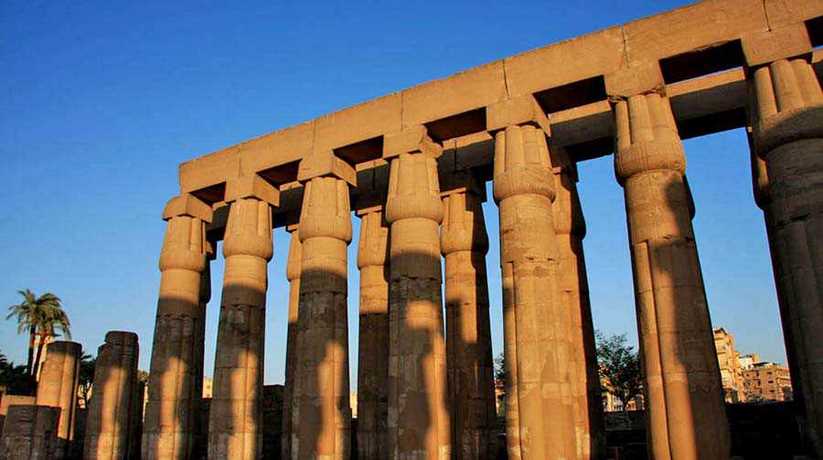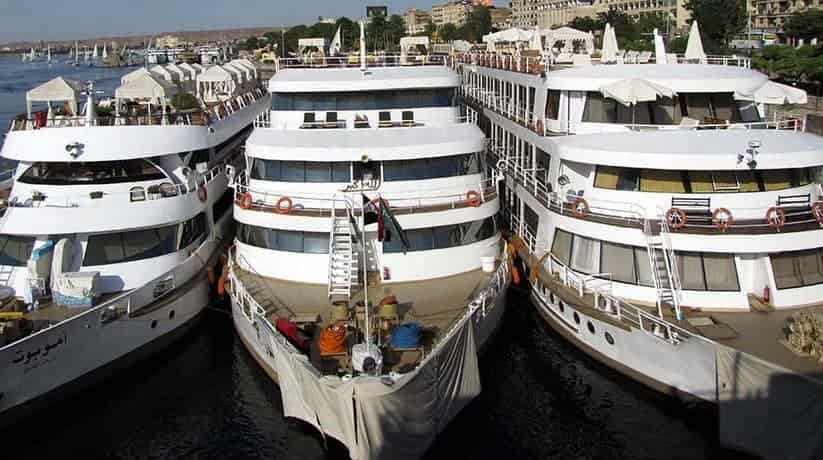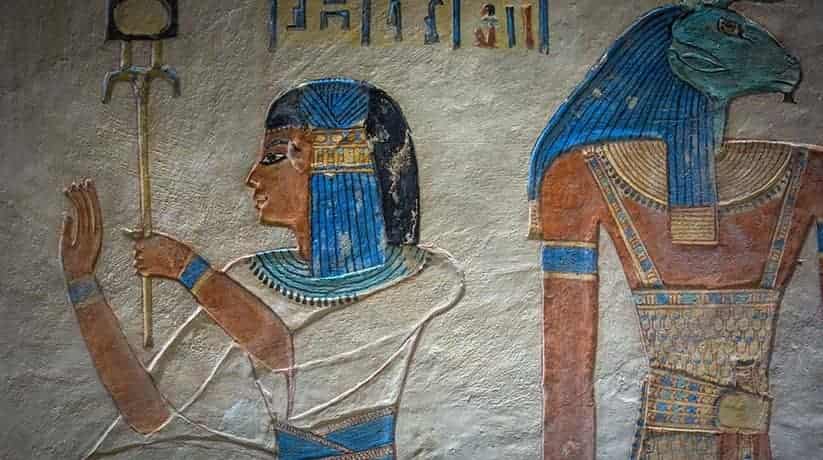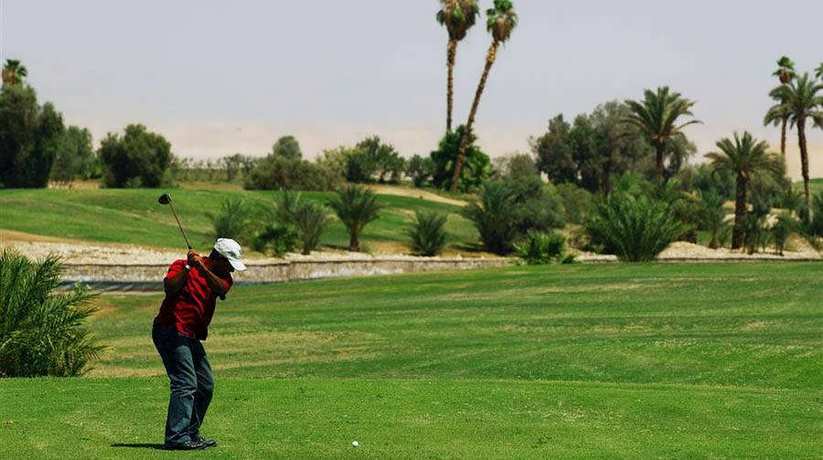Luxor Egypt Information, attractions, tours, booking
Luxor Egypt is a city in Upper (southern) Egypt and the capital of Luxor Governor-ate. The population is 487,896 (2010 estimate). Luxor Egypt area is approximately 416 square kilometers. Moreover, Luxor Egypt is the site of the Ancient Egyptian city of Thebes. It characterized as the "world's greatest open air museum". In fact, it is because the ruins of the temple complexes at Karnak and Luxor stand within the modern city. On the West Bank Necropolis lie the monuments, temples, tombs, Valley of Kings and Valley of the Queens. In fact, thousands of international tourists arrive annually to visit these monuments. Moreover, they contribute a large part towards the economy for the modern city. Thebes was the great capital of Egypt during the New Kingdom and city of the god Amun-Ra.
The city regarded in the Ancient Egyptian texts as "Waset", which meant "city of the scepter". Thebes also known as "the city of the 100 gates". Furthermore, it sometimes called "southern Heliopolis". The importance of the city started as early as the 11th Dynasty. It is when the town grew into a thriving city and renowned for its high social status and luxury. Moreover, it was also as a center for wisdom, art, religious and political supremacy. Mentuhotep II united Egypt after the troubles of the first intermediate period. He brought stability to the lands as the city grew in stature. The Pharaohs of the New Kingdom had expeditions to Kush, in today's northern Sudan. They also had to the lands of Canaan, Phoenicia and Syria. They saw the city accumulate great wealth and rose to prominence, even on a world scale.
Further details about Luxor Egypt:
In fact, Thebes played a major role in expelling the invading forces of the Hyksos from Upper Egypt. The city risen as the major political, religious and military capital of Ancient Egypt. It was from the time of the 18th Dynasty through to the 20th Dynasty. Luxor Egypt is often called the world's greatest open air museum, as indeed it is. The number of the monuments in the Luxor area unparalleled anywhere else in the world. Luxor Egypt is really three different areas. They are the city of Luxor Egypt on the east side of the Nile, the town of Karnak just north of Luxor and Thebes. Thebes is which the ancient Egyptians called Waset. It is on the west side of the Nile across from Luxor. Luxor area is a major attraction for tourists in Egypt from worldwide. Luxor Egypt is a tourist destination since the beginning of tourism.
During the late Dynasties of the Greek and Roman periods, the area drew tourists. It has been doing so ever since. Today, Luxor Egypt is well equipped to accommodate tourists with many hotels. In general, a tourist industry ready and willing to serve the people. It is from across the globe that descend on this area of the Nile Valley every year. Within Luxor Egypt city, there are three main streets. They are Al Mahatta Street, Al Karnak Street and the Corniche, next to the Nile. The street in front of the train station is Al Mahatta. It runs away from the Nile where it meets the gardens of Luxor Temple. Sharia Al Karnak runs along the Nile from Luxor Temple to Karnak Temple.
More details about Luxor Egypt:
Al Karnak street known as Al Markaz street and meets Al Mahatta street. To the south around the temple it known as Al Lokanda street. Along this street one will find the colorful signs of restaurants and cafes as well as bazaars. There, the usual variety of Egyptian souvenirs can found. Of interest is the alabaster, which is plentiful along the West Bank and milled not far from here. Also look for the clay pots used by the locals for cooking, which are more unusual. Luxor Egypt today governed by special statutes. They allow it more autonomy than other political areas of Egypt. Luxor Egypt has various government and other buildings conform to an 'ancient' building code. They are such as National Bank of Egypt, the spa south of the police station and the railway station.
Moreover, they all designed to appear as pharaonic constructs. In fact, the city has all the amenities tourists might expect. It includes a variety of hotels, bars, nightclubs and restaurants. In Luxor Egypt, one of the first stops must be the Temple of Luxor built by Amenophis III. Head south on Al Karnak street to reach the temple. It which connected to the Karnak Temple via a long stone processional street called a dromos. The dromos built by Nectanebo I and originally lined on either side by sphinxes. In front of the Luxor Temple, the dromos indeed well preserved. On the way to the entrance one passes by a Roman chapel of burnt brick. It dedicated to the god Serapis, which built during the rule of Hadrian. Moreover, there is a path that leads to the Nile side of the temple where one enters the complex.
Further details about Luxor Egypt:
After leaving Luxor Temple, head back to Al Karnak street and go north towards Karnak. Down the road, is the oldest mosque in Luxor. It is El Mekashkesh Mosque. It contains the remains of a 10th century Islamic saint. In fact, he was a monk before converting to Islam. The mosque is a popular pilgrimage destination. Here also is the Franciscan Church and its schools, one for boys and the other girls. Beyond this lies a great Coptic basilica. At the police station, head towards the Nile Corniche. Here, opposite the Mena Palace Hotel you will find the Mummification Museum. In fact, the museum has almost anything you would ever want to know about mummification. From here, head north towards Karnak. About halfway to Karnak, you will discover the Luxor Museum. You must visit it if you plan a well rounded and educated experience.
Most of the relics are from the surrounding area. They provide considerable insight to the monuments you will visit. From the Museum, head back to Al Karnak street and continue north towards Karnak. After crossing a small bridge one will begin to see the excavated dromos off the road. They run through a small village. A little further on, you will pass the ruins of the Temple of Mut. It is where another dromos leads to the gateway of the tenth pylon. The road finally arrives at the domed tombs of two saints. They are Sidi Ahmed and Sidi Ali. It is where a road leads past the Department of Antiquities to the main Temple of Karnak entrance. This road built along a canal that once connected the Nile to the Temple.
More details about Luxor Egypt:
There was a dock in ancient times, but now all that left is the quay and the raised dais. Just past that is a red brick Roman dock and past that two paved ramps led to the river bank. They bordered by stone parapets, and built during the rule of Taharqa. Past these is the Chapel of Achoris, which received the sacred boat of Amun when it used in ceremonies. To arrive at the entrance one follows the dromos with its crio-sphinxes. They have the head of a Ram and the body of a lion and are symbolic of the God Amun. Arriving at the temple, there is a statue of Ramses II with his son between his feet. To the right is a structure that has red steps, a red front colonnade and red brick walls. Inside there are pedestals.
This was a Roman chapel dedicated to imperial worship. After leaving the Temple complex on the left is the Franco-Egyptian Center. It has managed the temple complex since 1967. Down on the shore of the Nile is the Center National de la Recherche Scientifque, or CNRS. It houses the French and the Chicago Houses. A project of the University of Chicago is near by. After this, you will wish to take a boat trip over to the West bank. This trip had a special meaning to the Egyptians. It is for they were more crossing the way to the West and life, then to a necropolis. The Valley of the Kings is as good as any to try first, with tombs from the 18th and 19th Dynasties.
Further details about Luxor Egypt:
Outside the Valley of the Kings, the road leads past Antef. It named for the 11th Dynasty princes who buried here. Some tombs can still seen as one heads towards the Temple of Seti I. Most of what left of Seti's Temple is the view. The court entered by the ruined gate of a pylon The court has what left of a palace on the south side. The road continues south passing Dra Abu El Naga necropolis. The road winds itself westward until reaching the Valley of Asasif. These are 25th and 26th Dynasty tombs. At the end of of the Valley of Asasif at the foot of a cliff named Deir El Bahri is a spectacular complex of temples. The Temple of Mentuhetep I, Hatshepsut and Thutmose II here must seen. Much of the architecture here seems so powerful. It is against the towering cliffs in the background.
From here, the road continues past the remains of the Temples of Ramses IV and Thutmose III. It eventually reaches the Necropolis of Sheikh Abd El Qurna. This 18th Dynasty necropolis sits amidst houses where there are hundreds of holes. And below here, one comes to a huge complex that took twenty years to complete. The road runs along the remains of Thutmose IV, Merneptah, Ay and Horemheb's Temples. It finally comes to the huge complex known as Medinet Habu. It is another of Thebes's major attractions and a must see sight. The gate has square towers and appears almost oriental. Behind the complex is the workmen's village called Deir El Medina.
More details about Luxor Egypt:
Out in the fields near here is the Colossi of Memnon. They are one of the major tourist attractions throughout time. Southwest of Deir El Medina is the Valley of the Queens. It is where queens of the 18th and 19th Dynasties buried. From here, the road continues past the mud brick remains of Amenhotep III's palace. It called Malkatta. There is a lake to the east. At the other end of that, a small Roman temple called Deir Shelwit built at the end of the 1st century.
First Time in LuxorThe Nile travels through Luxor separating it into East Luxor and West Luxor. In the East you can find the town of Luxor Egypt, hotels, the airport and two important temples. In fact, thy are Karnak Temple and Luxor Temple. Moreover, in the West, you will find an array of things to see. They are such as the Valley of the Kings and the Valley of the Queens. There are also the Ptolemaic Temple at Deir El Medina and the Workers’ Village. Moreover, there are also the Colossi of Memnon, Deir al-Bahri and many others. A little over a decade ago a bridge built connecting East and West. but the traditional way to cross is by ferry. Here are some tips you can make use of while in Luxor Egypt:
Rent a Bicycle: When the weather’s cool enough, the best way to get around Luxor Egypt is by bike. The city is flat and all the sights are within a short ride from the center.
Nile Cruise: Remember that the best time of the year to go on a Nile cruise is during fall. The weather gets colder during fall in Luxor Egypt. So its advisable to be prepared with some warmer clothing.
Shop for Souvenirs: Pick up some of the souvenirs from the different bazaars all over the city.
Hot air balloon rides: They are indeed a spectacular way to see the whole city and catch some breathtaking views.
Mummification museum: That's something you won't see anywhere else!.
Tombs:Visit the tombs of the ancient artists and workers with their colorful walls. They depict their daily life.
- Get change: If you come across a bank during working hours, seize the opportunity to get change. Unless you prefer buying candies over and over again to get the small bills and coins you might need.
- Food: People don’t usually come to Luxor Egypt for great food. To explore an amazing cultural heritage, some good dining options are available. It is especially at the town’s main hotels. You can tuck in an old renovated house somewhere off a city’s main street.
- Internet: Luxor Egypt is completely covered with wireless Internet. Stay connected to family and friends. Check your email or share your trip photos at the comfort of your hotel. Or even at the columns hall of the Karnak temple!..
- Sightseeing tips: To avoid the tourist crowds, try visiting the temples in the early morning. Unless you’re planning to watch the sound and light shows. It takes place in the late evenings during summer. Remember to dress comfortably when visiting the ancient Egypt sites. Sneakers, sun glasses and caps are highly recommended.
- Events: Luxor Egypt hosts many international events. They are such as the rowing competition and the running marathon. In fact, it happens on a yearly basis in February.
Getting to Luxor EgyptThe airport is about 6 km from the city of Luxor Egypt. In fact,this airport is the best way to reach Luxor apart from the Nile Cruise. It is Egypt’s fourth largest airport. the airport features a food court and baggage help services every step of the way. It is easy to find transportation by bus or taxi into Luxor Egypt.
Traveling to Luxor Egypt by train is very long but indeed very exciting. Egypt’s railway authority offers many railway travel options including the sleeping train.
Buses carry passengers from Cairo to Luxor Egypt via two different stations:
Aboud station: +20 2 2431 9447.
El Torgoman station: +20 2 2276 1333.
Getting around in Luxor EgyptYou won't take many steps outside your hotel before offered a taxi. They are blue and white. Most of the taxis used to be very old Peugeot 504 s. There is a steadily increasing number of Asian saloon cars. They are like of Daewoo, Hyundai and Nissan. There are no meters. Agree the price before you get in. LE 15 should be enough for most journeys within East Bank town area. But you may have to haggle a bit to get to that price. The price is per taxi, not per person and there should be no extra charge for any luggage. Most hotels have a price list at reception but you may have to ask to see it. These lists are useful, especially if you want a taxi to take you further afield.
Blue and white mini buses are the standard form of mass transport in the town area of Luxor Egypt's East Bank. Covered pick ups serve the same purpose out of town and on the West Bank. The cost for a journey is rarely more than LE 2. The main problem is knowing where the bus is going. The buses will stop for you and if the driver doesn't speak English, someone else on the bus probably will. Traveling on the bus can be intimate. They do tend to keep taking people on, whether there is room or not.
These are the sailing boats moored alongside the Nile in the center of Luxor Egypt and by hotels. Their 'captains' and touts offer sailing trips. They promoting in particular 2 hours trips at sunset. They sail to Banana Island and Crocodile Island. Banana island used to be a tiny plantation (not on an island at all) not far from the Jolie Ville hotel on the east bank. Nowadays you are more likely to taken to one of three small islands off the west bank. Crocodile island is the site of the Jolie Ville hotel. In practice there is no longer a crocodile, and nor is it now called 'Crocodile Island'. The crocodile used to be in the hotel's zoo when it was the Movenpick. The new owners, Maritim no longer have the crocodile. They renamed the grounds as 'King's Island'. Nevertheless, Crocodile Island usually is how it is still sold.
You can go between the East and West Banks by road. But this involves a huge 15 km diversion via a bridge to the south of Luxor Egypt. A ferry is much easier, quicker and cheaper. The 'National Ferry' runs all day and night. Local people pay LE 1 each way. Tourists LE 3 each way. You pay someone at a desk near the beginning of the gangplank.
National Ferry: The National Ferry will usually ask you to buy a return trip when you pay for the outward one. Make sure you get a return 'ticket' so that you can prove payment when you get on the ferry to come back. Alternatively, just say you are only going one way and pay for the return when you go back. The National ferry leaves from a pier almost opposite the northern end of Luxor Temple.
Motor Boat: One of the motor boats that also take tourists for trips on the Nile will take you across to the other side. Agree the fare beforehand. They used to do it for 2 Egyptian pound, but nowadays 5 Egyptian pound per person is normal.
There are now mini piers for the motor boats, close to the National ferry pier and on the West Bank. Otherwise the motor boat may moor alongside other boats so you have to go from one to another to get off. Children will normally help you, whether you want help or not, and will expect a tip. The National Ferry is cheaper and easier to get on and off!
Bikes are available for hire on the east and west banks. Look out for a stack of bikes probably chained to a post. You will see them in various places and the road between town and the hotels. It is difficult to be more precise about locations. In fact, it is because most of the time they taken away at night and reappear in the same or a different place the next morning. You should get a telephone number of the chap hiring the bikes. So that he can come to your rescue if there is a problem with the bike. Prices are rarely displayed so haggle well. Start around LE 25 per bike per day and see how you get on. Luxor Egypt is flat, so cycling is quite easy. Road manners are not a feature of Egyptian life.
Motorists are quite used to people walking along the edge of the road. Many local people cycle. You will probably find they are far more tolerant of cyclists than some European drivers. Bikes come into their own on the west bank. It is where there are plenty of quiet roads through local countryside. If you are going in the summer months, be aware of the heat the risk that the sun will be beating on your back some of the time. Do take plenty of water in case you stay longer than expected in a country area where bottled water is not so easy to find. Cycling is easier in the cooler months (November - March).
Caleches, also known locally as 'hantours' are plentiful. You will offered rides by drivers. They will even drive beside you as you walk down the road, trying to persuade you to buy a ride. Moreover, they will offer to take you to the market. They will give the impression that it is a special market or that the market is only open that day. The fact is the main big market opens every day and all day. The efforts of local animal charities and the position improved in recent years. A few of the horses appear to be well looked after. The drivers tend to gallop the horses and use their whips unnecessarily.
Rarely do you see a horse in the shade or drinking.If you really must ride in one, please choose carefully. Select one that looks well looked after and not too thin. Do be careful what you pay. Initially you will offered a ride for, say, ten pounds. If you accept quickly, without clarifying the cost, you may charged ten English pounds per person. Resist for a while and the cost will drop and will become Egyptian pounds. Ultimately, you should not pay more than the taxi fare. Make sure you do not pay more for the ride than the price they enticed you with.














































































